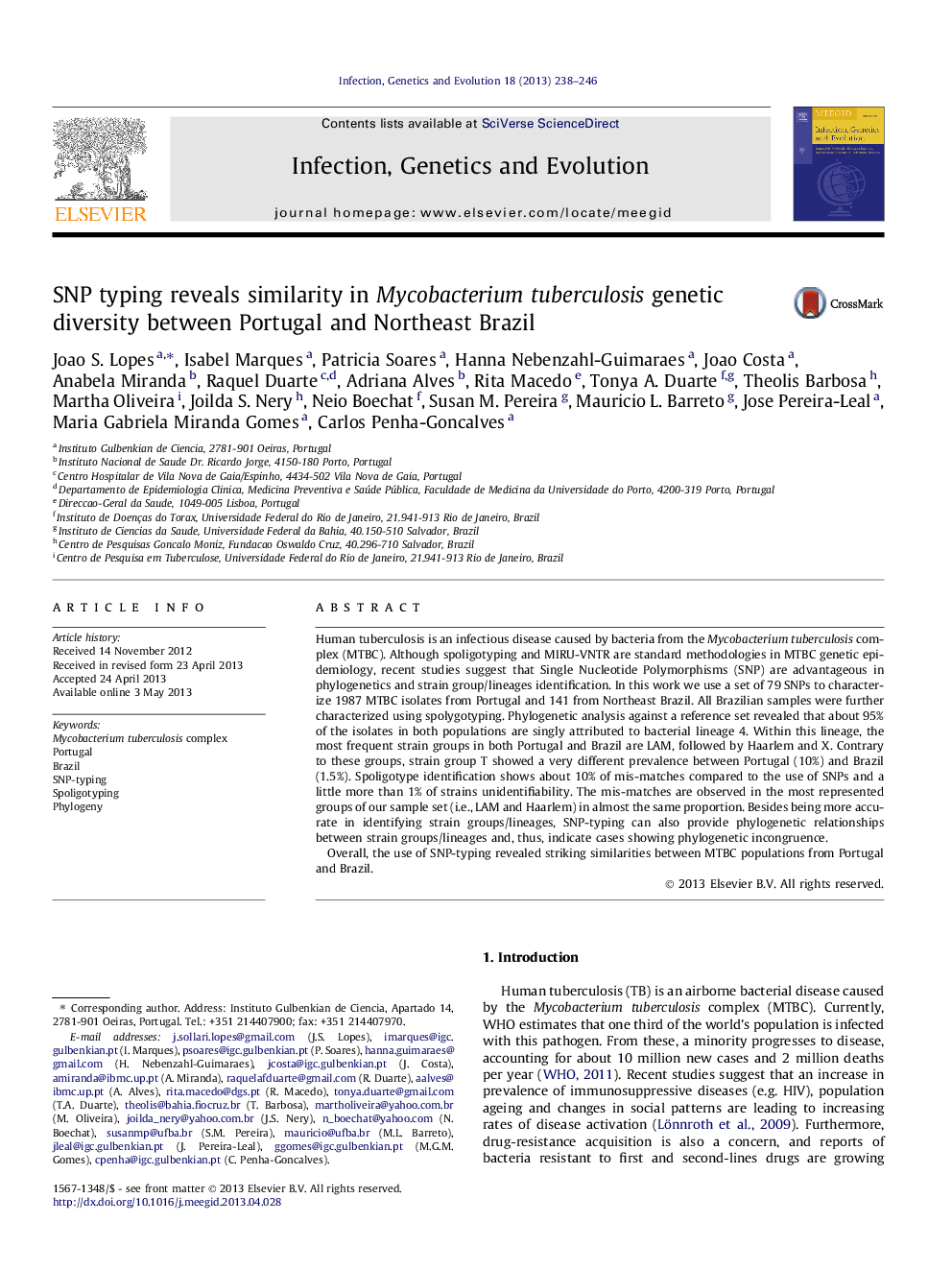| Article ID | Journal | Published Year | Pages | File Type |
|---|---|---|---|---|
| 5911091 | Infection, Genetics and Evolution | 2013 | 9 Pages |
â¢We characterized MTBC populations from Portugal and Northeast Brazil.â¢We used a SNP-based Bayesian tree for identification of the MTBC isolates.â¢Our approach allowed to define the usefulness of SNPs in strain identification.â¢MTBC populations from Portugal and Northeast Brazil presented striking similarities.
Human tuberculosis is an infectious disease caused by bacteria from the Mycobacterium tuberculosis complex (MTBC). Although spoligotyping and MIRU-VNTR are standard methodologies in MTBC genetic epidemiology, recent studies suggest that Single Nucleotide Polymorphisms (SNP) are advantageous in phylogenetics and strain group/lineages identification. In this work we use a set of 79 SNPs to characterize 1987 MTBC isolates from Portugal and 141 from Northeast Brazil. All Brazilian samples were further characterized using spolygotyping. Phylogenetic analysis against a reference set revealed that about 95% of the isolates in both populations are singly attributed to bacterial lineage 4. Within this lineage, the most frequent strain groups in both Portugal and Brazil are LAM, followed by Haarlem and X. Contrary to these groups, strain group T showed a very different prevalence between Portugal (10%) and Brazil (1.5%). Spoligotype identification shows about 10% of mis-matches compared to the use of SNPs and a little more than 1% of strains unidentifiability. The mis-matches are observed in the most represented groups of our sample set (i.e., LAM and Haarlem) in almost the same proportion. Besides being more accurate in identifying strain groups/lineages, SNP-typing can also provide phylogenetic relationships between strain groups/lineages and, thus, indicate cases showing phylogenetic incongruence.Overall, the use of SNP-typing revealed striking similarities between MTBC populations from Portugal and Brazil.
